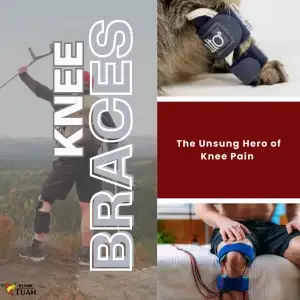Knee braces are supports designed to reduce pain and improve mobility for individuals with knee pain or injuries. They work by relieving pressure on the joint, preventing excessive movement, and enhancing knee function.
Each type of brace serves a specific purpose, whether it’s for post-injury recovery, protection during intense sports, managing chronic conditions like osteoarthritis, or aiding post-surgery recovery. While knee braces won’t cure osteoarthritis, they can help manage the discomfort. Common options for osteoarthritis include knee sleeves, web knee braces, unloader knee braces, and hinged knee braces.
Table of Contents
Introduction
Walking with a knee injury or osteoarthritis can feel like your youth has been stripped away, right? It’s tough to deal with the pain and frustration that comes with every step.
Luckily, thanks to advancements in technology, we can find ways to manage knee pain, like supplements, injections, and of course, knee braces.
Knee braces are like your knee’s trusty sidekick, giving you the support you need to regain mobility and avoid being stuck in bed all day.
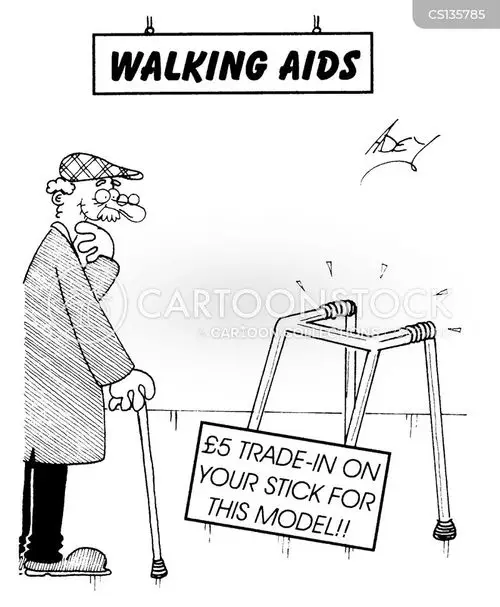

What are Knee Braces?
Knee braces are medical devices designed to stabilize the knee joint and keep it in place. They help maintain proper alignment, reduce stress on the joint, and prevent sudden or excessive movement.
The primary goal of these braces is to reduce pain and discomfort while improving functional performance.
When Should I Wear Knee Braces?
1.Post-Injury
Got a sprain, ligament tear, or maybe a meniscus tear that’s making every step feel like a challenge? A good knee brace can be your best companion while you heal. These braces help to keep everything stable and aligned.
By supporting the joint and keeping it straight, they can stop things from getting worse while you focus on recovery.
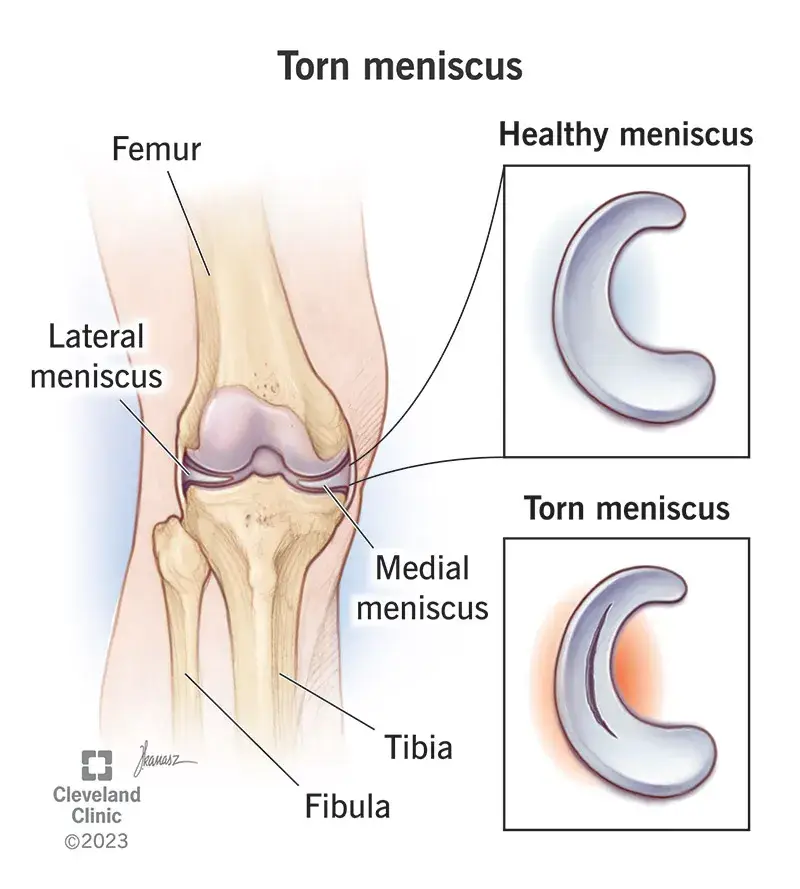

Now, if your injury feels more painful when walking or even bending your knee, a hinged knee brace might be exactly what you need. These braces are built with extra support in mind, so they reduce the strain on your knee and make moving around a lot less uncomfortable.
Think of it as a helping hand (or leg!) that lets you move around without pushing your knee too hard. Healing doesn’t have to mean staying stuck on the couch, right?
2. Chronic Pain
For people with conditions like arthritis, braces can help reduce the strain on your joints. Some knee braces are designed to help reduce inflammation due to osteoarthritis.
According to David C. Thut, MD, a sport medicine specialist, there’s no need for braces even when you have arthritis. Only wear one if knee braces can reduce pain with activity and help you move better.
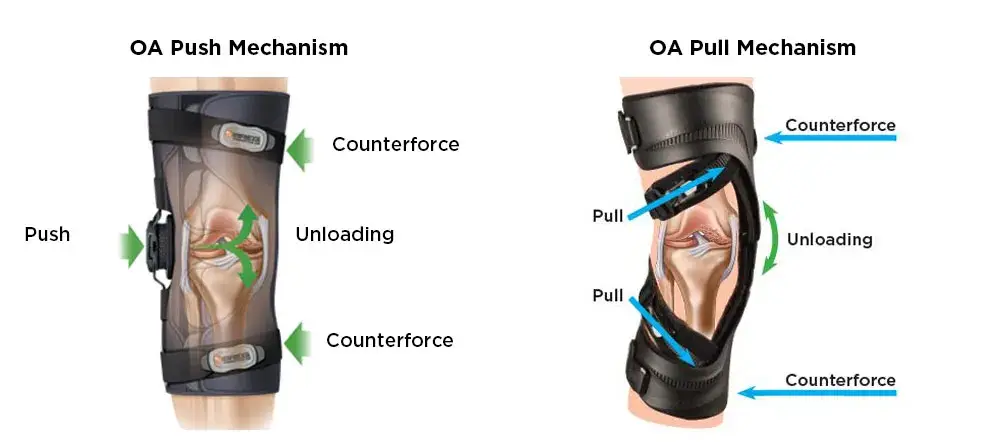

3. Preventive Measures
If you play sports or do activities that are rough on your knees, wearing a brace might save you from future trouble. Knee braces are incredibly helpful for athletes and during intense physical activities.
Knee is susceptible to get hurt, especially in high contact sports such as volleyball, football and basketball. Imagine spending more than 30 minutes per game diving for a ball, or twisting your knee. Most likely your knee will hit the ground most of the time.
A brace helps protect your knee by stopping it from bending too much and compress the tissue around it.
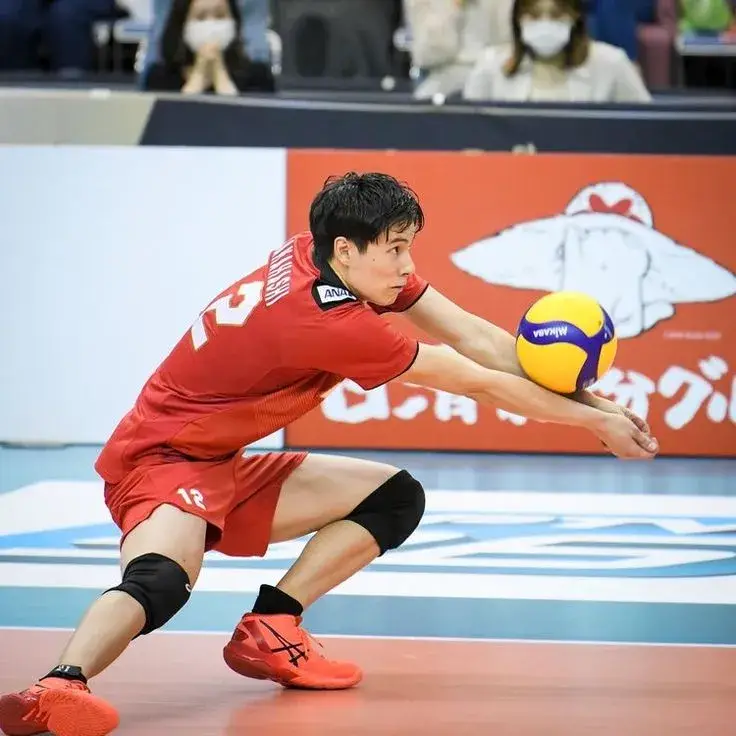

4. Post-Surgery
After knee surgery, your doctor might recommend a brace to protect your knee during recovery.
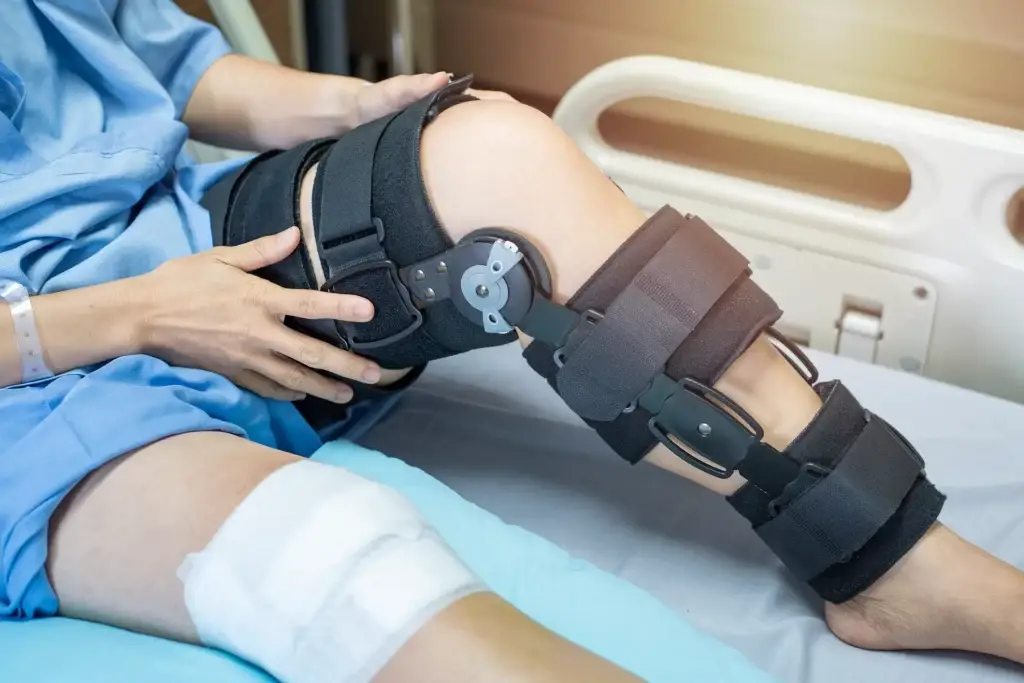

Types of Knee Braces
Type | Explanation |
Hinged | Best for individuals recovering from ligament injuries or post-surgery to provide stability and controlled movement. |
Unloader | Best for people with knee arthritis to reduce pain by reducing pressure from the affected area. |
Patellofemoral | Suitable for those with kneecap issues to provide support and alignment. |
Functional | Designed for athletes or active individuals recovering from ligament injuries to support movement during physical activity. |
Prophylactic | Perfect for athletes in contact sports to help prevent knee injuries during high-impact activities. |
Knee Braces: What’s Best for Osteoarthritis?
Knee braces can play a small but helpful role in managing osteoarthritis. While they won’t slow down the progression of the condition, they can make you and your knee feel more comfortable as you go about your day.
Here are some benefits of wearing braces for osteoarthritis:
- Reduce Pressure: They help ease the strain on your knee, making daily activities less painful.
- Support Healing: After an injury, a brace can provide the stability needed to let your ligament heal while still allowing movement.
- Improve Alignment: Braces can straighten your knee and shift weight away from the affected area, reducing pain and making muscle-strengthening exercises easier to handle.
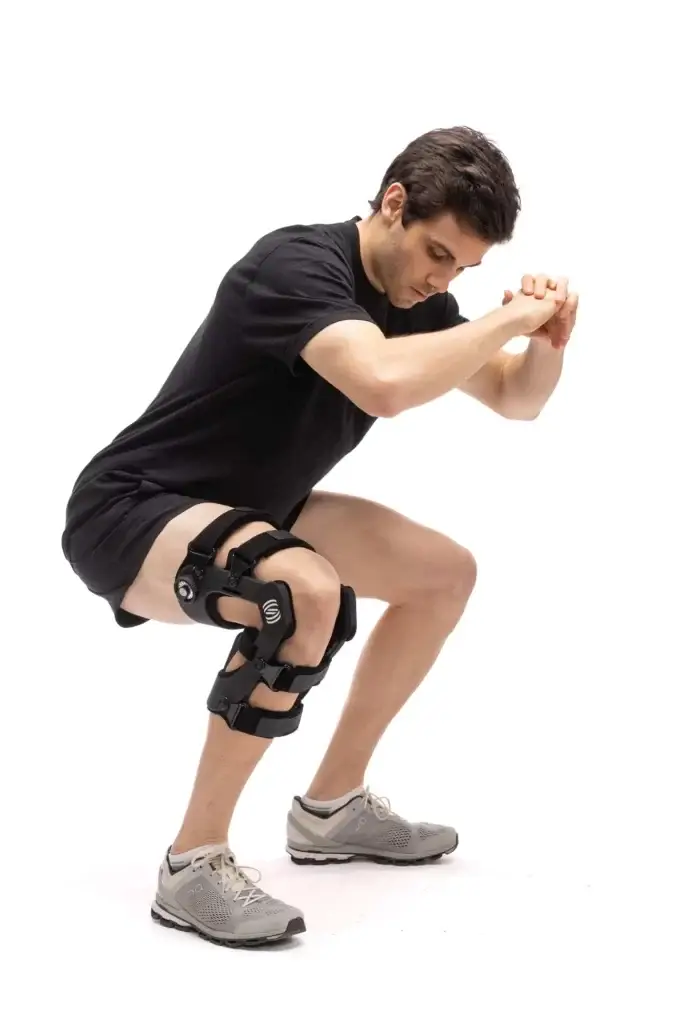

So, referring to the question, which braces is the best for osteoarthritis? The answer is it depends on each individual. The choice of the brace is based on specific needs, severity and condition of the patient.
Type of braces that are common for osteoarthritis includes:
- Sleeve Knee Braces: Good for knee pain and stiffness. These braces wrap around your knee, helping to reduce swelling and keep the joint warm.
- Web Knee Braces: These braces have silicone webbing that tightens in certain spots when you bend or straighten your knee, giving support where it’s needed.
- Unloader Knee Braces: These braces are usually custom-made or partly customized by a doctor. They have adjustable straps and hinges to take pressure off the painful part of your knee. They’re best for inner knee osteoarthritis as they shift weight to the outer side.
- Hinged Knee Braces: The hinge moves with your knee as it bends and straightens, helping to keep it stable and reduce pain during recovery.
Lee, Paul Yf et al. “Unloading knee brace is a cost-effective method to bridge and delay surgery in unicompartmental knee arthritis.”
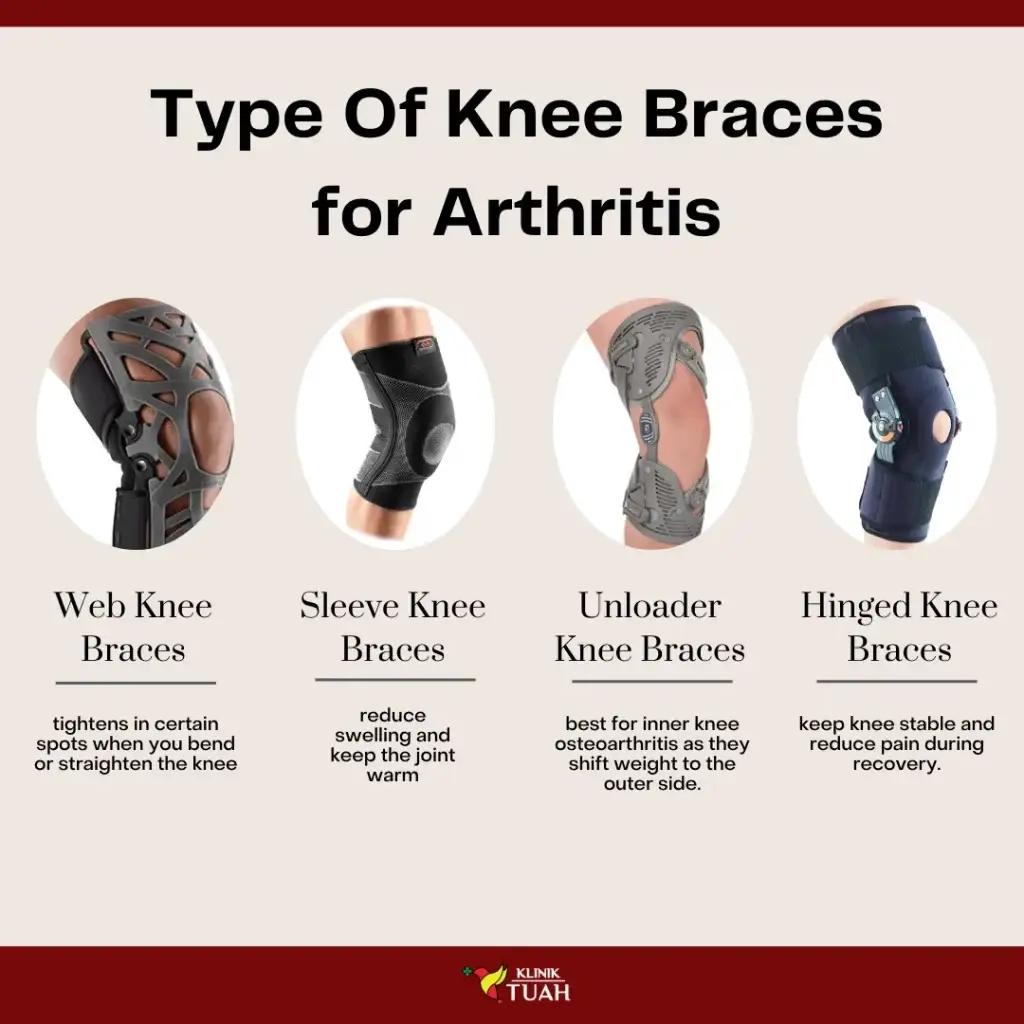

To Wrap Things Up
Living with knee pain can be challenging. The discomfort, swelling, and difficulty in movement can really affect your mood and energy. Thankfully, there are many ways to manage knee pain, and knee braces are one of them.
While they may not stop osteoarthritis from progressing, they can support your knee by providing stability, reducing pressure, evenly distributing weight, and improving alignment.
It is important to choose the right brace, therefore consult with your doctor before taking the next step. Each brace has its own purpose, and they’re all designed to fit your specific needs.
So, could a knee brace be the support your knees need?
Want to Know More About Knee Pain Treatment? Click Here
Discover Everything You Need To Know About Knee Pain Here
FAQ
Q. Can I wear a knee brace all day?
It’s best to wear a brace during activities that put stress on your knees. Wearing it all day could weaken the muscles around your knee and might causes skin irritation.
Q. Can I wear them to sleep?
It’s best to take off your knee guard before bed to avoid it becoming too tight and cutting off blood flow. The exception is after surgery, where your doctor might advise wearing it all the time.
Q. What are signs that you might need a knee brace?
You may need a brace if you notice any of these signs:
– Persistent knee pain
– Swelling around the knee
– Difficulty moving your knee
– Symptoms of arthritis
No ONE DESERVE TO LIVE IN PAIN
Experience the Difference with Klinik Tuah’s Knee Pain Treatment

